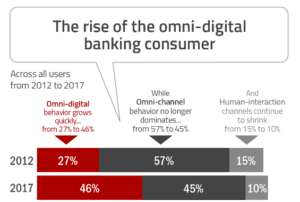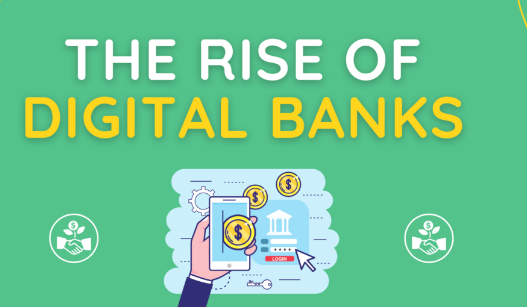In the digital age, traditional banking is undergoing a seismic shift due to the remarkable rise of digital banking services. This article explores the rise of digital banking and the significant impact it is having on traditional banking institutions.
Customer Convenience
To begin with, digital banks offer 24/7 access to accounts, easy money transfers, and mobile check deposits, catering to today’s fast-paced lifestyle.
Reduced Overheads
With no physical branches to maintain, digital banks have lower operational costs, which can translate into better interest rates for customers.
Enhanced Personalization
To add on, digital banks employ data analytics to offer tailored financial solutions and personalized advice, enhancing the customer experience.
Financial Inclusion
Digital banks often cater to underserved populations, offering accessible financial services to a broader range of customers.
Branchless Banking
Moreover, traditional banks rely on physical branches, while digital banks operate entirely online, saving costs and streamlining services.
Mobile Wallet Integration
Digital banks are increasingly integrating with mobile wallets, allowing users to manage finances and payments seamlessly.
Traditional Banks Adapting
In addition, to remain competitive, traditional banks are investing in online platforms, enhancing their digital offerings.
Online Security Concerns
Furthermore, digital banks face cybersecurity threats, and customers must stay vigilant in safeguarding their online banking information.
Customer Service Evolution
Traditional banks are adapting by offering online chat support, enhancing customer service in the digital realm.
Evolving Regulatory Landscape
Regulations are evolving to address digital banking, ensuring customer protection and a level playing field.
Digital Lending Platforms
Digital banks often employ automated lending platforms, making the loan application process faster and more convenient.
Democratizing Financial Services
Additionally, digital banks break down financial barriers, allowing users to access services that were once reserved for the affluent.
Data-Driven Insights
Digital banks leverage customer data to provide insights into spending habits, assisting with financial planning.
Rising User Expectations
Digital banks have raised the bar for user experience and convenience, prompting traditional banks to innovate.
Challenges for Traditional Banks
Traditional banks are challenged to balance legacy systems with the need to innovate in the digital age.
Competitive Fintech Landscape
The rise of fintech startups adds to the competition in the digital banking space, forcing traditional banks to adapt.
Security Advancements
Traditional banks are investing in cybersecurity to protect customer data and maintain trust.

Rise of Digital Banking
Hybrid Banking Models
Some traditional banks are embracing hybrid models, offering both physical branches and digital services.
Changing Banking Dynamics
Finally, the coexistence of digital and traditional banks is reshaping the banking industry, creating a more diverse ecosystem.
Conclusion
In conclusion, the rise of digital banking is a transformative force in the financial world. Hence, it offers unparalleled convenience, reduced costs, and enhanced personalization, reshaping the way customers interact with their finances. As digital banking continues to evolve, traditional banks are facing pressure to adapt and meet the rising expectations of their customers. The coexistence of these two banking models is redefining the industry, ultimately benefiting consumers with more choice and innovation.




